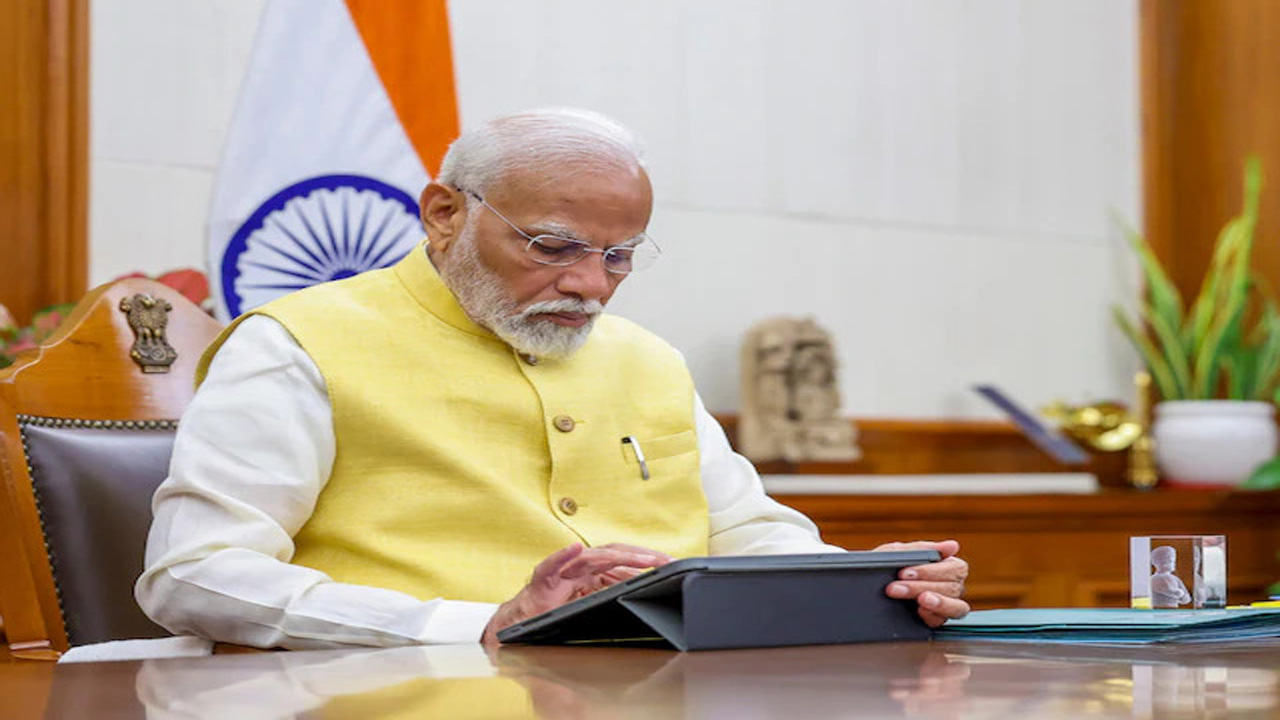Domestically, Modi’s administration is expected to continue its focus on development, welfare schemes, and economic reforms
 KRC TIMES Desk
KRC TIMES Desk

Narendra Modi has been sworn in as PM for a historic third consecutive term. This significant political event marks a pivotal moment for India, characterised by continuity and notable shifts within the ruling government. With 37 ministers from the outgoing government dropped, including seven cabinet ministers, Modi’s administration signals a blend of experience and fresh faces, aiming to navigate the complexities of coalition politics while maintaining a strong governance framework.
Modi’s decision to retain senior leaders like Rajnath Singh, Amit Shah, Nitin Gadkari, Nirmala Sitharaman, S. Jaishankar, and Dr. Jitendra Singh underscores his commitment to continuity and leveraging seasoned experience. These leaders, having held crucial portfolios in Modi’s previous term, bring a wealth of expertise and stability to the administration.
Their continued presence ensures that the Government’s core policies and strategic directions remain consistent, particularly in defence, finance, foreign affairs, and PMO, where their past performances have been pivotal.
The inclusion of J. P. Nadda, Shivraj Singh Chouhan, and Manohar Lal Khattar brings a fresh dynamic to the Cabinet. Nadda’s return after five years and the induction of former Chief Ministers indicate Modi’s strategy of rewarding loyalty and political acumen.
This blend of old and new is crucial for addressing emerging challenges and bringing in innovative ideas. The retention of leaders like Piyush Goyal, Jyotiraditya Scindia, Dharmendra Pradhan, and Bhupender Yadav reflects a calculated move to harness their legislative experience and policy-making skills.
The exclusion of 37 ministers, including prominent figures like Smriti Irani and Narayan Rane, is a significant recalibration. While some, like Smriti Irani, lost their seats, the removal of others, despite electoral victories, signals a strategic shift. This move reflects Modi’s willingness to adapt and innovate, ensuring that the Cabinet remains dynamic and responsive to current political realities.
The focus on retaining ministers with independent charges while dropping many ministers of state indicates a streamlined approach aimed at enhancing efficiency and accountability.
For the first time, Modi’s Government is navigating the intricacies of coalition politics, with allies like the JD (S), TDP, JDU, and many smaller allies joining the Cabinet. This coalition reflects the BJP’s recognition of the need for broader alliances to maintain political stability and governance efficacy.
The inclusion of diverse regional leaders underscores a pragmatic approach to national governance, aiming to balance regional interests with national priorities.

Despite the celebratory atmosphere, Modi’s third term is set against a backdrop of significant challenges. The BJP’s loss of majority on its own for the first time indicates a more formidable opposition landscape. The Congress and its allies in the INDIA bloc have managed to dent the BJP’s strongholds, notably in Uttar Pradesh, Rajasthan, and Maharashtra.
This political reality necessitates a nuanced approach from Modi, balancing his assertive leadership style with the demands of coalition governance.
Domestically, Modi’s administration is expected to continue its focus on development, welfare schemes, and economic reforms. However, the Government will also need to address pressing issues like job creation, agricultural distress, and economic inequality.
Internationally, Modi’s leadership is anticipated to maintain India’s assertive stance in global politics, strengthening ties with key allies while navigating complex relationships with neighbouring countries. The presence of leaders from the Maldives, Bangladesh, Nepal, and Sri Lanka at the swearing-in ceremony highlights the importance of regional diplomacy in Modi’s third term.
As Modi embarks on his third term, the challenge lies in sustaining the momentum of development while adapting to new political realities and public expectations. The upcoming assembly elections in Haryana, Uttarakhand and Maharashtra will be early tests of the government’s strategy and effectiveness.
With a cabinet that mixes continuity with change, Modi’s administration is poised to tackle the complexities of governance with renewed vigour and strategic insight. As the Government convenes for its first meeting, the nation watches with keen interest, anticipating how this new chapter will unfold in India’s dynamic political saga.



